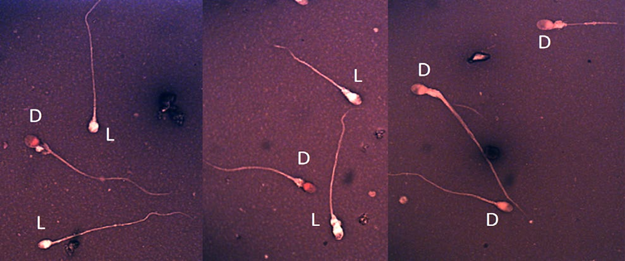
Sustainable Construction
Lorem ipsum dolor...


Sperm vitality, as estimated by assessing the membrane integrity of the cells, can be determined routinely on all ejaculates, but is not necessary when at least 40% of spermatozoa are motile. In samples with poor motility, the vitality test is important to discriminate between immotile dead sperm and immotile live sperm. The presence of a large proportion of live but immotile cells may be indicative of structural defects in the flagellum, a high percentage of immotile and dead cells may indicate epididymal pathology or an immunological reaction due to an infection.
The percentage of live spermatozoa is assessed by identifying those with an intact cell membrane, by dye exclusion (dead cells have damaged plasma membranes that allow entry of membrane-impermeant stains) or by hypotonic swelling. The recommended test for diagnostic use is the eosin–nigrosin test.
Sperm vitality should be assessed as soon as possible after liquefaction of the semen sample, preferably at 30 minutes, but in any case, within 1 hour of ejaculation, to limit deleterious effects of dehydration or changes in temperature on vitality.
This one-step staining technique uses nigrosin to increase the contrast between the background and the sperm heads, which makes them easier to discern. It also permits slides to be stored for re-evaluation, training and quality control purposes
Fig: Spermatozoa with red or dark pink heads are considered dead (D), whereas spermatozoa with white heads (L) are considered alive.
